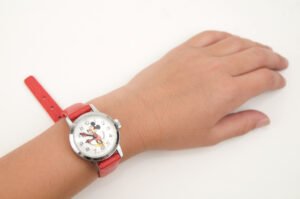If you own an old toolbox, it must definitely have an antique wrench! But if you visit the market, you might wonder if it’s really an antique! After all, most of the old wrenches are tiny and rusty! So, most sellers ignore its details and value it by guesswork!
But now it’s time we change that! At Antiques Know How, we respect your money and returns! So, we made a step-by-step guide to identify and value an antique wrench! So, get your pencil and magnifying glass, and let’s do it together!
Identifying Authentic Antique Wrenches (Key Signs to Spot)
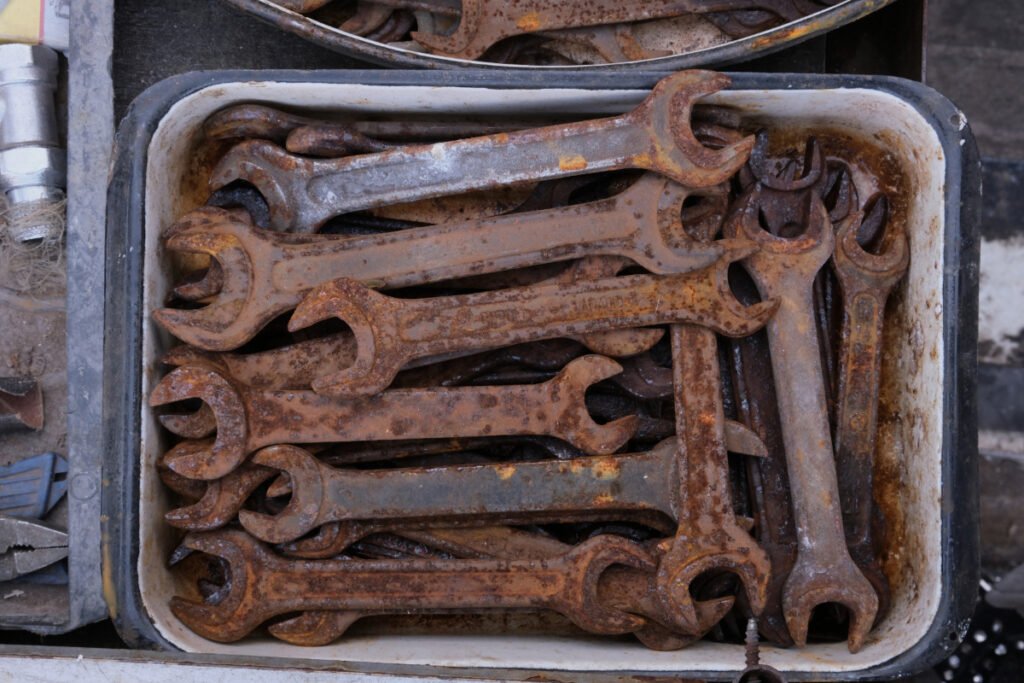
There’s no doubt that antique wrenches look different than modern examples. But let’s not forget reproductions and replicas. In such cases, you need to spot certain signs to spot a truly antique piece.
Here are some key signs of an authentic antique wrench:
- Early Manufacturing Signs: Look for signs of hand forging, such as uneven surfaces or unique hammer marks. Even early machine-made wrenches have visible unevenness and less refined finishes than later ones.
- Material: Most early wrenches were commonly made of wrought iron or early forms of steel. These examples can be identified by their distinct looks and feel.
- Shape and Construction: Some early adjustable wrenches had unique and less standardized designs compared to later, more uniform models.
- Jaw Design: The earliest antique wrenches mostly have fixed jaws for specific nut sizes. Adjustable jaws became popular later.
- Markings: Examine the shaft and head for any stamped maker’s marks, patent dates, or early company logos. These are vital for identification and valuation.
History & Evolution of Antique Wrenches
It’s rare to have two inventors for the same tool, right? But antique wrenches have two makers, Henry King (1832) and Solymon Merrick (1834). While Henry King received an early patent in 1832 for a wrench, it was Solymon Merrick’s 1834 patent for an adjustable wrench.
It was in the 1840s that Merrick made the first screw-adjust wrench. He added a ‘c’ opening and a notched hole on its shaft. Plus, he built nut-shaped sockets to hold the screw! But, its thin post slipped easily and needed a grip. So, down went its use, needing more designs!
Then entered Loring and Aury Gates Coes from the 19th Century! They improved the prior stuff and made the first Monkey wrench with an open-end clamp. But these became popular and easy to get. So, you obviously won’t get high returns for them.
3 Types of Vintage Wrenches & Their Valuation
Vintage wrenches are pretty diverse! So, if you are planning to get one for your toolkit, you must know how each one works. So, let’s discuss the four main types of antique wrenches and their cost.
1. Chain Wrench

A chain wrench uses a flexible chain to turn and move round or cylindrical objects, especially with smooth surfaces, such as pipes and filters. The chain wraps around the object and locks it in place with a strong grip.
These adjustable and compact wrenches were popular in both the mechanical and plumbing industries, with their values ranging from $40–$70 today.
2. Monkey Wrench

Monkey wrenches are large, adjustable wrenches with smooth and flat jaws, typically used for turning flat-sided nuts and bolts. Due to their shape and build, monkey wrenches are often confused with pipe wrenches, but you can spot them by their flat jaws and wedge-based designs.
Well-preserved early monkey wrenches can fetch $50-$300 today, depending on brand and condition. Later, more common models generally have lower values.
3. Pipe Wrench

Especially designed to grip and turn threaded piping, pipe wrenches can be identified by their serrated jaws and spring-loaded adjustment nut. Unlike monkey wrenches, these bite into rounded surfaces for a strong grip.
The earliest examples of pipe wrenches, especially those from renowned makers, can be worth $50-$200 or more today, depending on model and condition.
The later period saw the rise of combination wrenches featuringan open-end wrench on one side and a box-end wrench on the other.
4 Factors to Identify & Value an Antique Wrench
Now that you know your wrench type, let’s move on to the costs! Here, we’ll discuss the age, designs, and other factors that impact a wrench’s value!
1. Old Wrench’s Date & Age
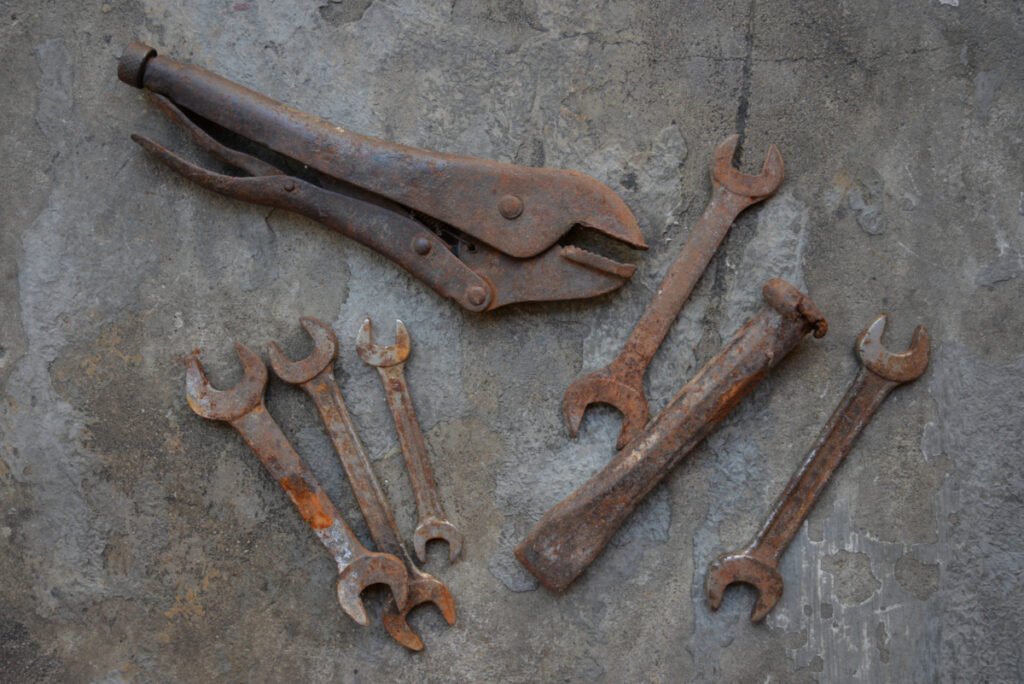
One of the most notable features of antique wrenches is that they have a full hand-cast iron body, making them precious. Here are other cues for tracing your wrench’s age correctly!
Pre-1850s Antique Wrenches:
The earliest antique wrenches usually had entirely hand-forged bodies, often with a rough finish and unique, non-standardized designs. These might have simple, functional forms without any complex mechanisms.
This wrench also won’t bear any logos, just like old plows. But you can still check for an engraved date on its handle! Values for these rare pieces can range from $200 to $500+, depending on their uniqueness and condition.
Mid-to-Late 19th Century (1850s-1900) Wrenches:
These transitional wrenches began to display signs of a mix of hand-finishing and early machine work. Most examples bear makers’ marks and early patent dates. Also, look for rotating sockets and adjustable screws to spot these models! These wrenches can range from $75 to $300+ based on brand, rarity, and condition.
Early 20th Century (1900-1930s) Wrenches:
During this time, the mass production of wrenches had become more prevalent, and wrenches became more standardized and functional. However, since these later models are quite common and easy to find, they’re worth little.
Still, rare models from well-known brands in excellent condition can be valuable, ranging from $40 to $150+. Also, self-adjusting or specialized wrenches can fetch higher prices.
Here are some wrench patent numbers for reference!
| Year | Age | Patent Number | Vintage Wrench Type | Average Valuation |
| 1912 | 111 years | US1181654A | Improved Plier or Pipe Wrench | $100 – 120 |
| 1868 | 154 years | 84605 | Adjustable Wrench | $200 – 250 |
| 1871 | 151 years | 119596 | Monkey Wrench | $90 – 100 |
| 1890s | 132 years | 254862 | Chain Wrench | $60 – 90 |
An aged, white wrench might look brown with time. So rub your finger and check for a crude, powdery finish before buying.
2. Antique Wrench Head Style
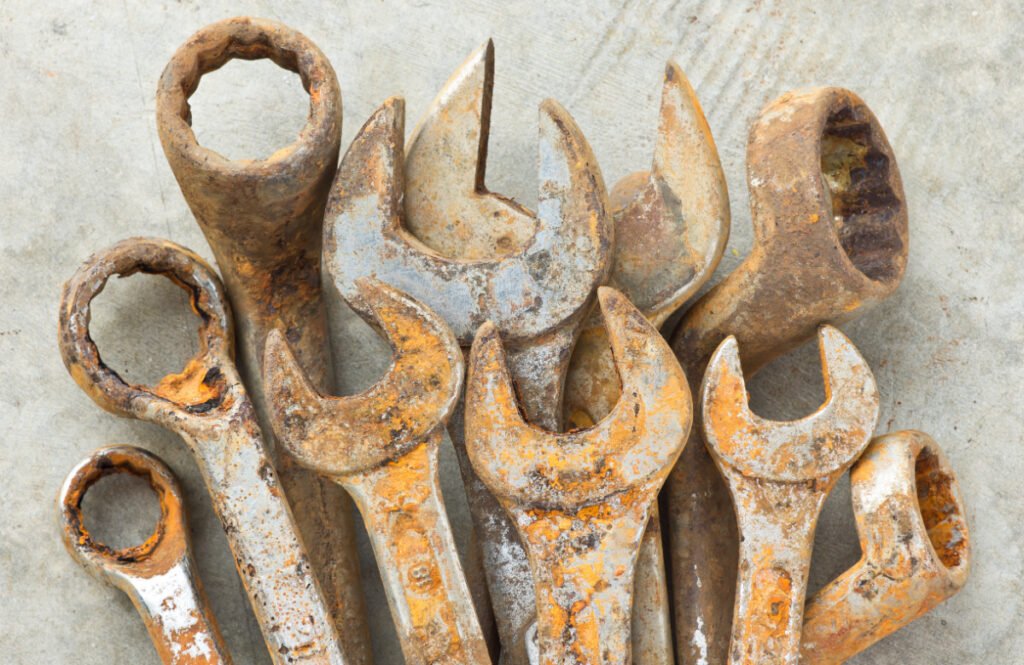
Antique wrenches were not always slim and U-shaped. In fact, most older models use natural snapping heads, just like an alligator. And you might even see curved or jaw-like heads in these early 1840s models.
Here’s how the head style can help you age and value an antique wrench:
- Early Fixed Jaws: Often roughly shaped and specifically hand-forged to fit specific nut or bolt sizes.
- Jaw-like or “Alligator” Heads: Some early adjustable wrenches had jaws that resembled an alligator’s mouth for gripping. These can fetch $100 to $250+, based on the mechanism and condition.
- Open-End Designs: Became more standardized in the late 19th century. Early, well-marked examples can fetch $50 to $150+.
- Socket-Type Heads: Early forms of socket wrenches existed but were less common than open-end types in the truly antique era.
- Spanner or Pin Head: These wrenches feature one or more pins or lugs designed to fit into corresponding holes or slots on nuts or fittings. Early examples made for particular machinery or equipment can be valuable.
3. Branding
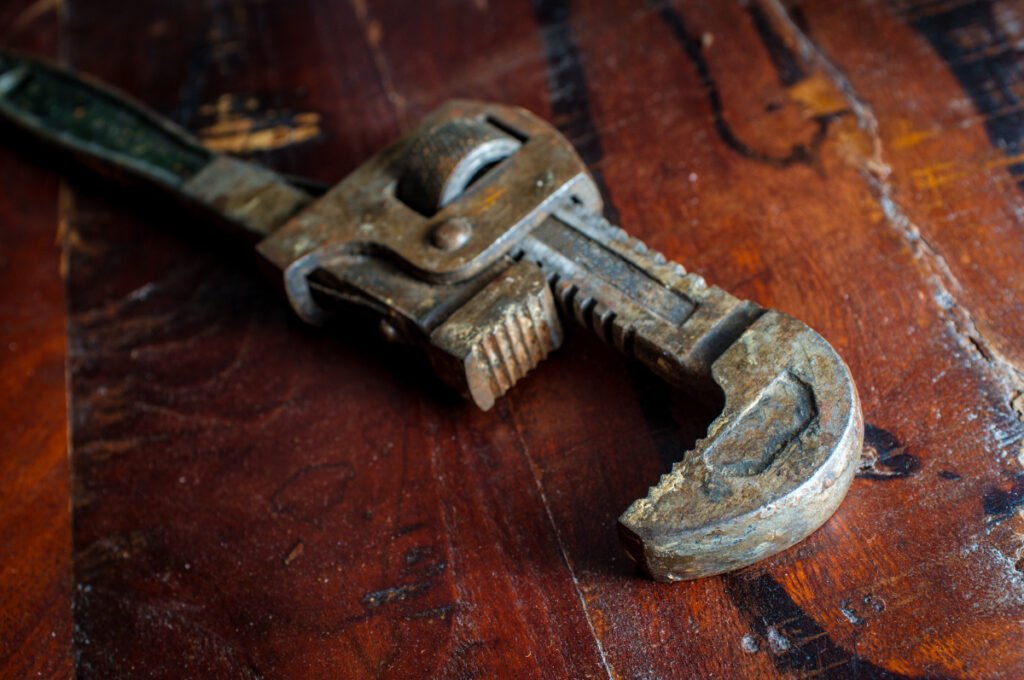
Like every other antique item, branded antique wrenches will be more valuable than those that are unbranded or unmarked.
For example, well-known and respected tool manufacturers from the late 19th and early 20th centuries, such as ‘Stanley Rule & Level Co.,’ ‘Keen Kutter (Simmons Hardware Co.),’ ‘Deere & Company,’ and early ‘Snap-On’ and ‘SK Wayne’ tools, are highly collectible.
On average, manufacturer markings can raise the value of an old wrench by 5 – 20%, but the rarity of the brand and specific model also play a role.
Generally, you can find the maker’s mark on the shaft as embossed logos, signs, or trademarks. Here are some notable antique wrench brands and their average values!
| Old Wrench Name | Manufacturer | Antique Wrench Type | Average Valuation |
| Starter Repair Wrench | John Deere | Curved, Open End Wrench | $200 – 250 |
| Drive Breaker Bar Wrench | Snap On | Socket Wrench | $200 – 220 |
| Alligator Wrench | Keen Kutter | Monkey Wrench | $100 – 120 |
| Drive Ratchet Wrench | SK Wayne | Socket Wrench | $250 – 300 |
| Black & Decker Wrench | Stanley | Combination Wrench | $300 – 350 |
But hey, we know you must be confused about the wrench’s logo too. So, we have compiled some popular logos for your help!

4. Old Wrench Handle & Shaft Style
The style of handles in early wrenches varied. Some were simply the forged metal of the wrench itself, while others had separate wooden handles (often hickory or ash).
Well-preserved wooden handles in good condition are generally preferred over bare metal handles. While less common in authentic antique wrenches, rare examples with ergonomic grips may also exist and fetch good returns.

Also, straight, linear wrenches are quite common, while unusual shaft/handle designs seen in older wrenches are considered rather rare and valuable. For example, s, l, or t shaft wrenches could be valued decently, due to their unique shapes.
Also, remember that cracked or damaged handles on antique wrenches can detract from their value.
Which Antique Wrench Company Is the Best?
You can get good-quality, branded wrenches from Stanley, John Deere, Keen Kutter, and Wayne. Most of these cost around $200 – 250.
How Do You Clean an Old, Rusty Wrench?
You can clean a rusty wrench by soaking it in a 1:4 solution of salt and vinegar. This will soften the rust, and you can clean it with a toothbrush.
How Do I Lubricate Old Wrenches?
You can lubricate old wrenches by coating them with white lithium grease, vaseline, or WD-40 lubes.
We know how small and rusty wrenches are. That’s why we stress checking their brands, shapes, and colors to verify them. As we saw above, you can pick curved wrenches for better value. And if you want to resell them, you must keep them free from dust and mold!
Tightening or loosening screws with a wrench is okay! But won’t you need a hammer to strike them first? Join me, and I’ll tell you all about identifying vintage hammers!
Note: This article is intended for informational, educational, and entertainment purposes only. Some images are illustrative and may not represent actual brands, products, or related entities. All trademarks, product names, brand logos, packaging, and other intellectual property referenced remain the exclusive property of their respective owners. Any brand mentions or references are provided solely for descriptive and educational context and do not imply any formal or commercial association.









